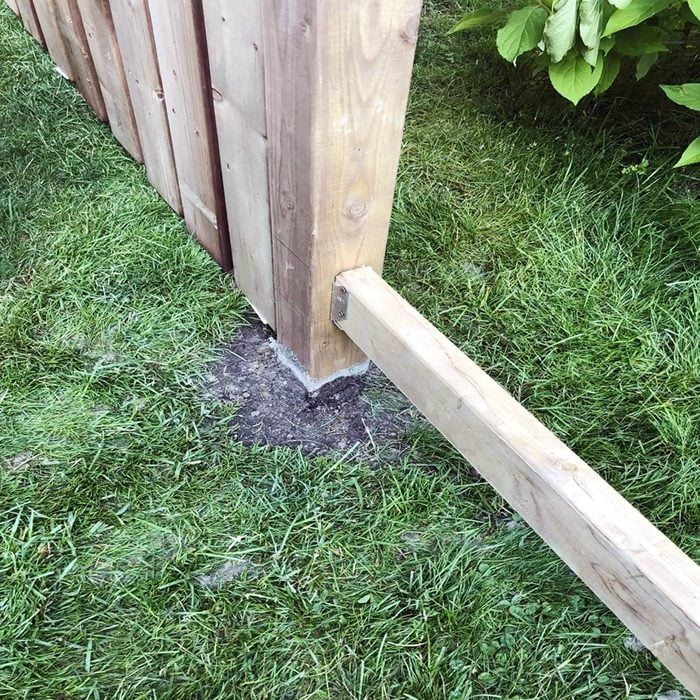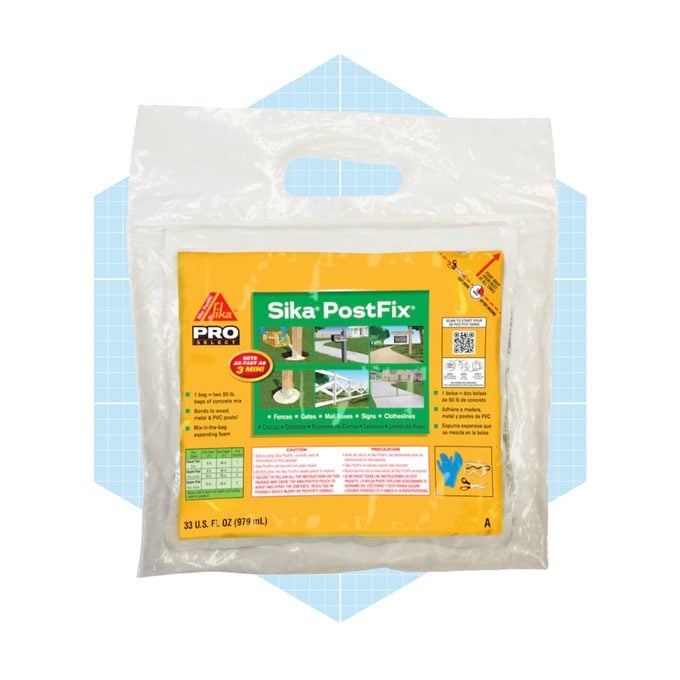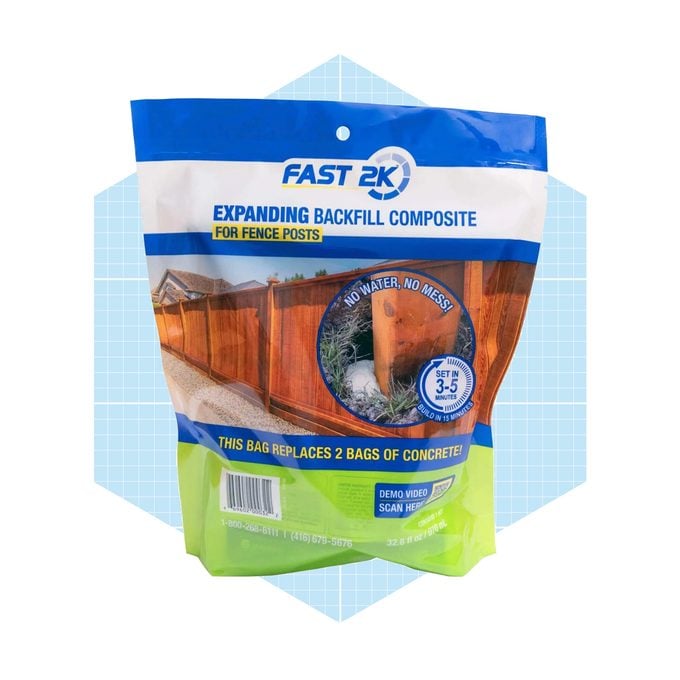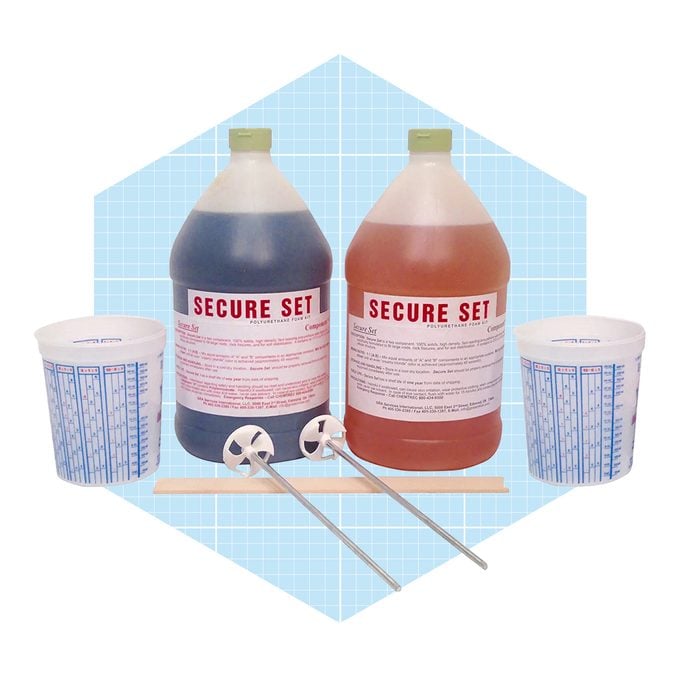Should You Use Expanding Foam for Fence Posts?
Updated: Aug. 02, 2023

Expanding foam for setting fence posts is a recent innovation. We asked two experts how it compares to concrete for strength and usability.
Any fence builder knows you need strong posts for a strong fence, and that means backfilling the post holes with a dense, hard material other than dirt.
While there’s a lot to be said for well-draining gravel, the material of choice has long been concrete mix. It’s available in 50-pound bags at any home center, and you usually need two bags per post. For a 100-foot fence with 10 posts, that means lugging half a ton of concrete mix or more to the site, mixing it with water and shoveling it into the holes.
If there was a lightweight alternative to concrete that performed as well, many fence builders would choose it just to save their backs. Fence post-setting foam offers promise, but is it just as good as concrete?
We asked two experts who set fence posts with foam: Alex Capozzolo, co-founder of Brotherly Love Real Estate in Philadelphia, and Forrest McCall, co-owner of the home improvement blog Mama Needs a Project.
Their opinion? A resounding, “it depends.”
On This Page
Expanding Foam vs. Concrete for Setting Fence Posts
Post-setting foam is a two-part product, and the parts have to be mixed before use. You can do that right in the bag. It’s definitely lighter than concrete mix. Each bag contains enough material for a single post and weighs only two or three pounds.
Note: Unlike spray foam in an aerosol can, post-setting foam is a closed-cell formulation without air bubbles. Most insulating foam is open-cell.
Posts need to be braced when using foam
Whether you backfill with concrete or foam, you dig the same size post holes to the same depth, which should be one-third the length of the entire post for stability.
Backfilling is more difficult with foam. Because it expands when it sets, McCall says the post tends to move if not braced properly. Capozzolo adds there’s little time to fix leveling errors. Bracing is also recommended with concrete, but it isn’t as critical because concrete sets more slowly and provides plenty of time for re-adjustment.
Foam can save time
Post-setting foam hardens in minutes (15, according to Capozzolo) and cures fully in about two hours, much faster than concrete. This means you could backfill all your posts in the morning and continue building the fence in the afternoon, instead of waiting until the next day as you would with concrete
Foam isn’t temperature dependent
Unlike concrete, post-setting foam sets just as quickly in cold temperatures as it does in warm ones. McCall also claims you can use foam in wet weather. Concrete also sets in wet weather, but rainwater in the mixture can weaken it. That won’t happen with foam because it isn’t water-soluble.
Foam costs more
A single bag of Sika foam costs about $16, at one bag per post hole. A bag of concrete mix costs about $6, at two bags per post hole.
Concrete is stronger
Capozzolo and McCall agree foam isn’t as strong as concrete. “For lightweight fences or locations that aren’t subject to high winds, the expanded foam would be the ideal choice,” Capozzolo says. “But if structural strength is a concern, then I’d recommend concrete.”
Part of the problem, as demonstrated by Joe Everest on YouTube, is that foam contracts slightly during curing. That creates gaps between the foam and the post, as well as the sides of the hole.
You can strengthen loose posts by adding more foam and covering it with dirt to force the foam into gaps as it expands. But all in all, you’re probably better off choosing concrete when you need strength.
Expanding Foam for Setting Fence Posts: Mistakes To Avoid
Post-setting foam is fairly new on the market, and it’s important to follow the instructions on the packaging. The mixing time is different for each product, and it’s usually very short — 15 to 30 seconds. Once mixed, you have to be ready to use everything in the bag.
Here are some common mistakes first-time users make:
- Under-sizing the hole: A bag of foam fills a hole eight inches in diameter by 36 inches deep. If the hole is too small, the foam will expand above ground and harden. This isn’t a huge problem because you can easily trim it to ground level with a reciprocating saw. However, don’t pour part of a bag into an undersized hole unless you have a plan for disposing of the rest, i.e. letting it expand inside a bucket. If you just let it keep flowing onto the ground, you’ll have a messy cleanup.
- Failing to cut the bag open after mixing: Every bag has a warning advising you not to do this. If the foam can’t get out, the bag will explode, showering everyone and everything in the vicinity with sticky foam.
- Touching liquid foam with bare hands: Like spray foam, post-setting foam is extremely difficult to remove from skin. Always wear gloves and long sleeves.
Best Expanding Foam for Setting Fence Posts
Some manufacturers call their product “expanding concrete” or “expanding composite”, and some formulations are stronger than others. As you would expect, the stronger products are also more expensive.
Sika PostFix

Sika PostFix sets in three minutes and cures in two hours. This popular foam can be used with all types of posts, including wood, metal and vinyl.
Fast 2K Concrete Alternative

More expensive than Sika, Fast 2K Concrete Alternative comes in a 2-1/2-1b. bag that replaces 80 to 100 pounds of concrete mix. It sets in 15 minutes in temperatures down to minus-20 degrees. The company sells a similar product for deck posts.
Secure Set 10-Post Kit

The two parts of the Secure Set 10-Post Kit come in separate containers, giving you the option of mixing smaller quantities when you need to strengthen an existing foam post footing. It’s also less expensive. The cost per post is about $6 cheaper than Sika.
